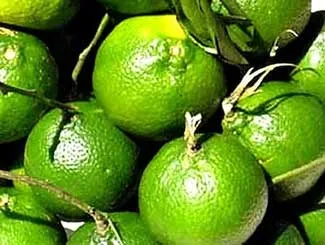When Batangas was the “Orange Capital” of the Philippines
At the mention of the name Batangas, among the first things that immediately comes to mind is coffee, even if the boom years of the plant back in the 19th century technically applied only to the then-town of Lipa. The coffee reputation continues to the present day, and not just in what is now the city of Lipa but the entire province of Batangas.
But wait! There was also an era when Batangas was also something of an “orange capital” of the Philippines. According to Encarnacion R. Buendia1, in a paper written in 1926, production peaked around 1912. The then-town of Tanauan, and to a certain extent the adjacent town of Santo Tomas, were considered the “orange district” of Batangas.
Back in the day, citrus production was among the main livelihoods of many inhabitants of the province. The most-widely produced of this was mandarin orange, and not just in Tanauan and Santo Tomas. In fact, writing this article is of special interest to me because, back in the late sixties, my family acquired a property on the outskirts of Lipa which used to be an orange plantation. Trees in plantations around the city, or so we heard it said, were being killed by some kind of bark disease. We shall return to this matter later.
Just to make sure all readers are on the same page, according to Julia F. Morton, the term “mandarin” applies to “a class of oranges with thin, loose peel, which have been dubbed as ‘kid-glove’ oranges2.” In other words, this class of oranges can easily be peeled using one’s fingers.
Furthermore, Morton said, these oranges are native to Southeast Asia and the Philippines. Contrast these with the larger oranges grown in temperate countries which one often needs a knife to peel.
 |
| Tagalogs call the dalandan (above) and the dalanghita "sinturis," but the former is actually bigger than the latter. Image credit: Dalandan: the Philippine Orange. |
The mandarin orange that Buendia wrote about were probably either of or both the dalandan (citrus aurantium3) or/and its smaller relative, the dalanghita (citrus reticulate Blanco, a.k.a. “tangerine orange4”) Both varieties of mandarin are “generally referred to as sintunis” by Tagalogs, although the term used as a matter of preference by Batangueños is “sinturis5.”
Wrote Buendia, “The mandarin is the only citrus fruit that has become of much importance nowadays in the Philippines; and Batangas is the only province where it is grown to any considerable extent, especially in the town of Tanauan.”
Furthermore, Buendia wrote, the orange was of “superior” quality and that “the conditions in the orange district of Batangas are so favorable to the mandarin that this fruit succeeds in spite of the little care that is accorded to it by the fruit growers.”
The main threat to mandarin production according, he wrote, was bark rot, which “has been the direct cause of most of the premature degeneration and deaths of trees.” The author failed to describe the disease, but this was presumably gummosis, which “causes a gummy sap to ooze from the bark, eventually causing the bark to crack and slough off6.”
This was also likely the same disease that attacked plantations of mandarin in Lipa back in the sixties when I was still a young boy. At any rate, the degeneration of mandarin trees was so alarming, Buendia wrote, that the Tanauan Citrus Station was established in 1919 “solely for the study of the citrus situation with the object of finding remedies for its improvements.”
Mandarin was by no means the only type of orange cultivated by growers in Batangas at the time. Pomelo (citrus maxima or citrus grandis7) was also widely grown even if “its cultivation has nowhere assumed commercial importance.”
Farmers in Batangas also grew the calamondin, the Philippine lime, alternatively called kalamasi or kalamunding in Tagalog. Then there were also those who planted and produced, although not to commercial quantities, lemon and the cabuyao. The last is the citrus macroptera8, otherwise known as the Melanesian papeda or the wild orange.
2 “Mandarin Orange,” by Julia F. Morton, online at Purdue.edu.
3 “Dalandan,” online at the Philippine Medicinal Plants.
4 “Dalanghita,” online at the Philippine Medicinal Plants.
5 “Sinturis,” online at Tagalog Lang.
6 “How to Diagnose Citrus Bark Diseases with Cracking and Peeling,” online at SFGate.
7 “Pomelo,” Wikipedia.
8 “Citrus macroptera,” Wikipedia.
